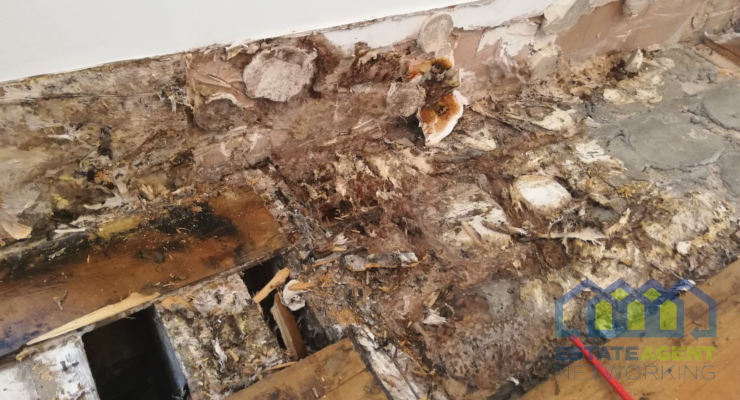What to do if you have Dry Rot
Something nasty that you really do not want to be seeing in your home is Dry Rot. It is quite a serious issue and it is vital that when you suspect you have it, 100% certain or not, that you call in the specialists. There might be advisory instruction videos or articles online as to what you need to do in order to treat it though for home owners I would seriously consider getting in a few estimates from dry rot /wet rot / wood treatment specialist who will in most cases offer you not only a professional extraction / elimination service, but also a guarantee of 10/20 years.
How do you know if you have dry rot? Many times the formation and expansion of dry rot will be out of sight such as behind walls, under floors, loft areas, in chimney breasts etc.
- Smell: Is there a damp, musty / fungal aroma? This might not always signify dry rot or any other rot, but in a room that is frequently used and aired where a persistent damp smell could mean that something nasty is growing out of sight.
- Mycelium growth: Is there visibly any mycelium growth (see photo below) which will certainly mean that dry rot is present and looking to expand on its food source. Check wood, plaster to include paintwork / wallpaper.
- Woodwork: Does any woodwork look to appear brittle or damaged?
- Dust: Dry rot via the fruiting body will push out spore dust. This fine, brown dust will be pumped out via the fruiting body. Look out for fine layers of brown dust which can mean you have an active dry rot problem.

Mycelium growth on timbers and plaster
“If woodwork appears warped or you note defects, for example on skirting boards, then tap the woodwork to hear either a solid or hollow noise with the latter meaning that the wood is likely to be brittle from attack by (wet) rot.“
What to do when you suspect you have dry rot? Get yourself in to action as soon as possible and this will mean you will have to call upon, unless you are yourself or know of someone who is, a professional person / company to eliminate the dry rot. Clear the area of all household items within the effected area, if in a room then clear the room and if you can leave a window open and yet the door closed. Try not to disturb the dry rot too much as it is vital that upon your survey from the specialists that they see the true state of things in order to estimate for the treatment works.
If you have inspected the area and removed, for example, floor boards or insulation, then keep these aside (for the surveyors) yet remove them from you property and stored carefully. Note that any items effected by dry rot will have to be disposed of.
“Dry rot is a living growing fungus.“

What does damaged timber from Dry Rot look like?
Why did I get dry rot? There are many reasons though normally it will be down to either dampness and or poor air circulation (moisture content of around 20%). Once you have dry rot it is not going to go away unless professionally removed and the effected areas taken out and / or treated. Moisture can also originate from the likes of damaged pipework, broken gutters, poor rendering, showers / bathroom etc
What does dry rot look like? You will see mycelium growth and then main fungus growth / fruiting body / sporophore (see image below). The mycelium growth is simply dry rot expanding its hunt for food (timber / plaster) and these feed back to the main fungus. Dry rot does expand, hence the importance of catching sooner rather than later, and can travel across the likes of brickwork / cement during its expansion.

What does dry rot look like – Sporophore
Things to note:
- From the last visual presence of any dry rot (sporophore) you will have to remove all and any plaster work / timbers to 1 metre so this could mean cutting back joists / beams / floorboards as well as chipping away plaster from walls.
- The timbers and walls will have to be treated with sprays.
- So to guarantee no regrowth the source of the problem (dampness / air circulation) will have to be remedied such as adding air bricks / new DPC / new supports for beams etc.
- Removal of dry rot can be very costly (sometimes this will be covered with your house insurance).
- It is important to find out the source of the dry rot, sometimes this can be from a neighbouring property so claims can be made.








